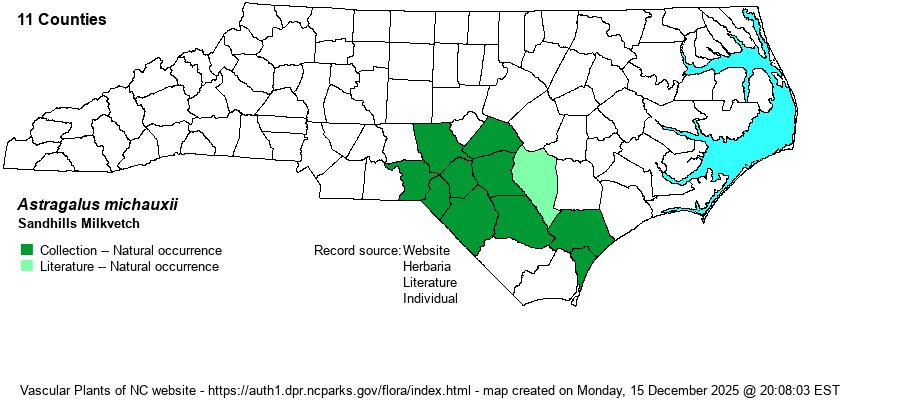| Author | (Kuntze) F.J. Hermann | |
| Distribution | Primarily limited to the Sandhills region (east to Harnett and Cumberland counties). However, it ranges eastward into the southern Coastal Plain to Pender and New Hanover counties.
This species has a narrow range, primariy limited to the Sandhills, from southeastern NC southwest to east-central GA. It is limited just to NC, SC, and GA. | |
| Abundance | Rare to uncommon in the Sandhills; very rare eastward. In fact, as it generally requires high-quality sandhills habitats managed by fire, it can be very rare in the Sandhills away from conservation areas. It is a State Special Concern species. | |
| Habitat | This is a species limited to well-managed open Longleaf Pine (Pinus palustris) sandhills, typically where there is a very diverse herbaceous layer. Open pine stands that are not burned every decade or more typically do not have the species. |
| Phenology | Blooms from late April into June, and fruits from June into October. | |
| Identification | This is a fairly slender, though still somewhat tall, herb that usually grows to about 2 feet high. It has somewhat widely scattered leaves, which are highly pinnate, with 15-29 narrow leaflets that are only about 1/2-inch long. Most of the plant has a smooth, waxy, almost "rubbery" feel to the touch. Each plant has a few showy racemes of pink flowers, growing on long stalks to several inches in length. Each raceme is about 3-4 inches long, and each flower is about 1/3-inch long. Normally, one can easily identify the species in the field without the flowers, as the rather sparse number of strongly pinnate leaves on a waxy smooth stem will suffice. Of course, the pink flower clusters can be spotted at long distances when you are walking through an open pine stand. | |
| Taxonomic Comments | None
| |
| Other Common Name(s) | Michaux's Milkvetch | |
| State Rank | S3 | |
| Global Rank | G3 | |
| State Status | SC-V | |
| US Status | | |
| USACE-agcp | | |
| USACE-emp | | |

